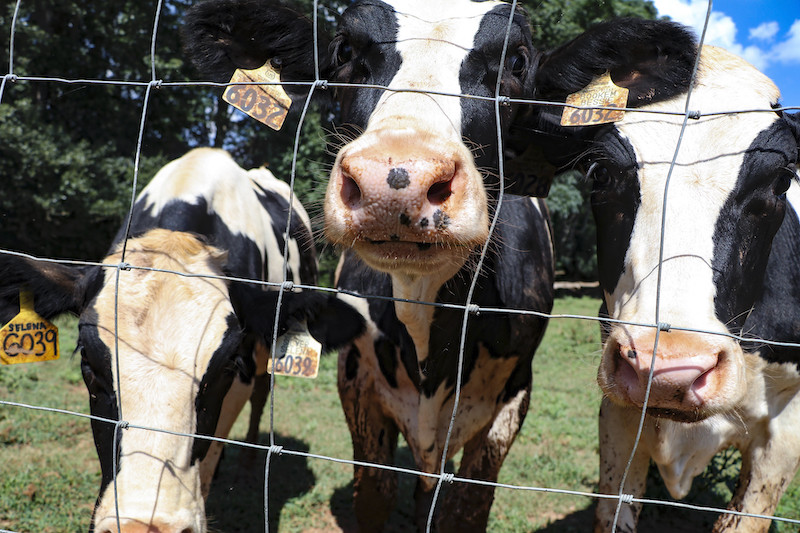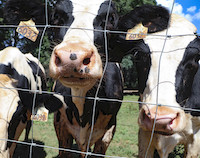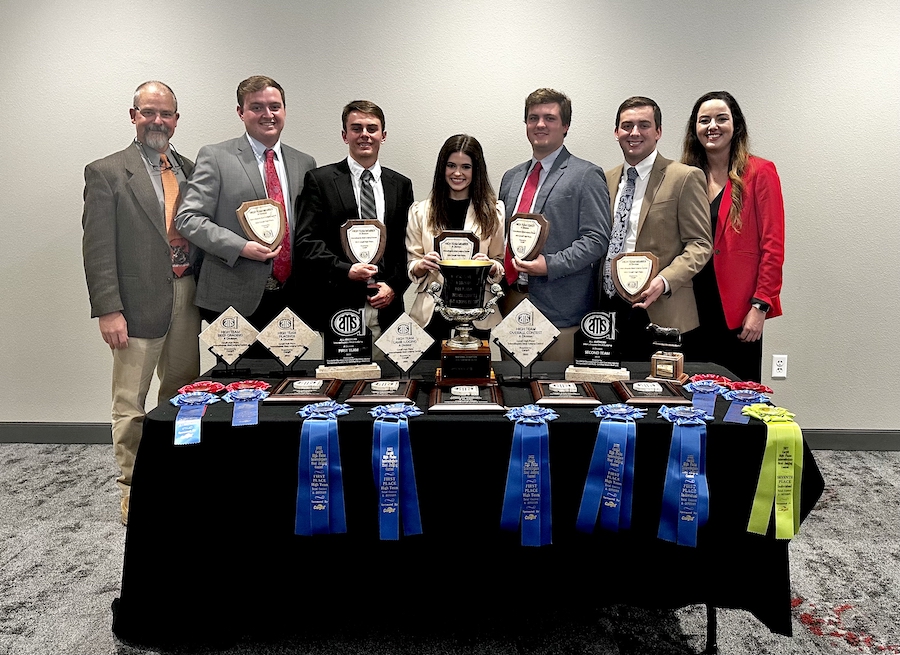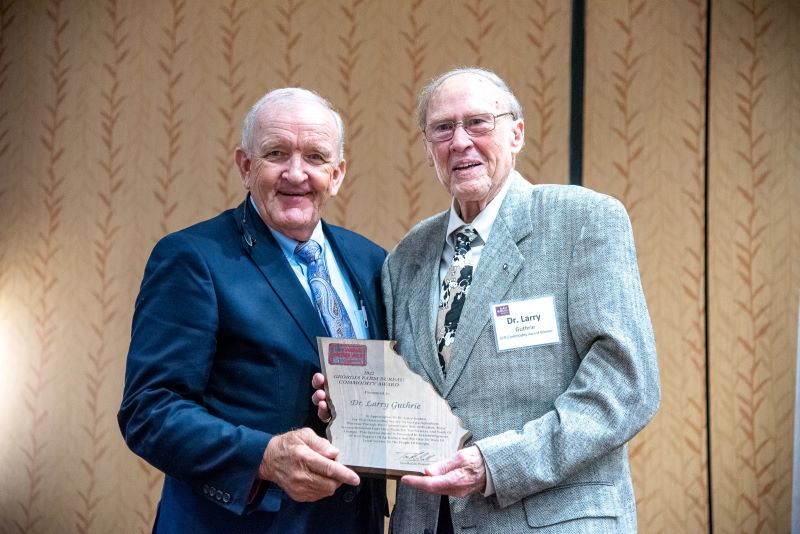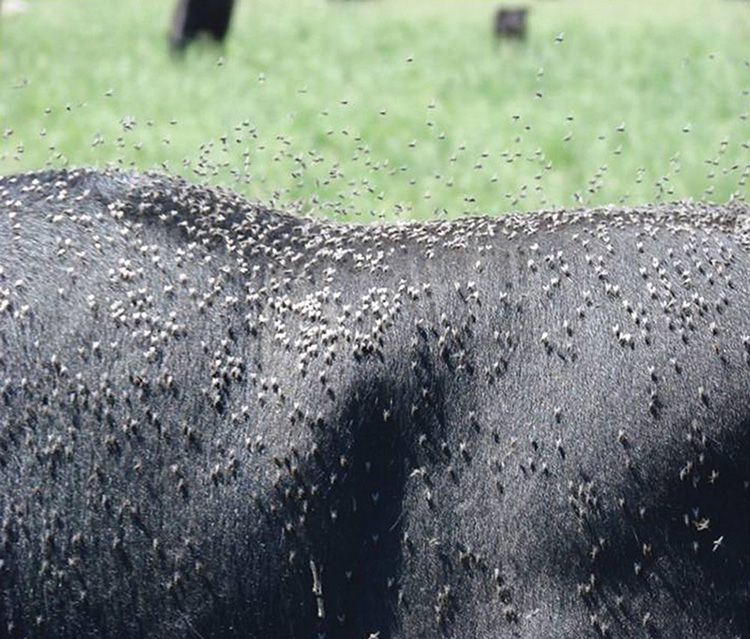Georgia’s summer heat can make it hard to do almost anything outside and, for dairy cows, that includes producing milk. Heat stress is inevitable in the Southeast U.S., and the first week of August had temperatures soaring past 100 degrees Fahrenheit.
As Georgians fight to keep themselves cool and hydrated, the state’s farmers are working to keep their farm animals as cool as possible. On the University of Georgia Tifton campus, dairy scientist Sha Tao’s research focuses on how to help dairy farmers manage heat stress.
Heat stress can negatively impact dairy cows and their milk production, but UGA researchers are working to keep cows happier, healthier and producing milk. When cows are exposed to a temperature-humidity index above 68, their milk production level begins to decrease, Tao said.
Tao has been studying how nutrition, cattle management, and physiology can impact milk production, dairy cow fertility and overall health since joining the UGA College of Agricultural and Environmental Sciences Department of Animal and Dairy Science in 2014.
“Heat stress is a major issue in the dairy industry. Caused by high temperatures and high humidity, it will lead to several physiological adjustments of the cows. You’ll have increased body temperature, increased respiration rate,” Tao said. “If we can understand how heat stress influences a cow and calf metabolically and physiologically, we can develop some additional management strategies or nutritional-pharmaceutical interventions to reduce the impact. We can’t 100% mitigate the impact of heat stress, but we can develop information that will better aid dairy cattlemen.”
Tao’s two primary goals with his research are learning how heat stress impacts mammary gland functions and how nutritional management impacts calf performance during the summer.
“Our study indicates that deprivation of cooling during Georgia summers reduces lactating cows’ milk yield by 20 pounds per day. Part of the reason for this lower milk production is the altered mammary gland development. Our finding suggests that deprivation of cooling induces the death of mammary epithelial cells, which are the cells that produce milk in the mammary gland,” Tao said.
He added that newborn calves have lower growth during the summer and a potential solution is to increase the amount of milk replacer fed to provide more energy and nutrients for better growth. However, UGA research suggests that feeding calves a milk replacer that contains 26% protein and 17% fat at 2 pounds of solids at two feedings per day causes more metabolic diseases, such as abomasal bloating, and fails to improve growth.
“Feeding large amounts of milk replacer during the summer, when fed twice per day, may not be a valid option to improve calf performance,” Tao said.
Results of his research have the potential to yield real-world benefits for dairy farmers. Reduced milk production caused by heat stress in the U.S. leads to a $2 billion annual loss, Tao said.
Dairy producers already use heat management strategies to help dairy cattle stay cool during the summer. Fans, misters and soakers are used to cool cattle at dairy operations across the Southeast, including the research farm Tao uses for his research at UGA-Tifton.
“In our dairies here in the Southeast, for example, Florida and Georgia, we face the most severe heat stress issues, and that’s because we have longer summers and more humidity. That causes problems,” Tao said.

